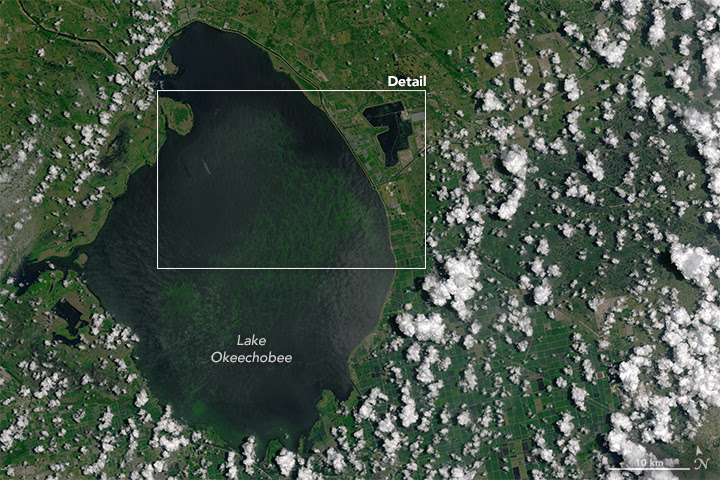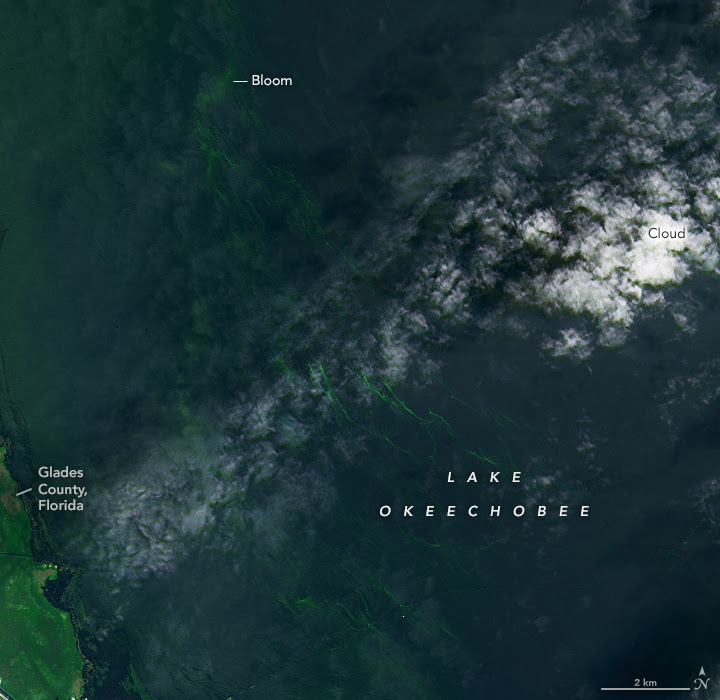Whether on the sea, in rivers or in lakes, algae is a huge problem and algae covered almost half of Lake Okeechobee – Florida’s largest freshwater lake – for much of June and early July 2023. The algae bloom led to the closure of part of a marina and health alerts in neighbouring counties.
We can see swirls and tendrils of blue-green algae, and they are visible in this image acquired on June 12, 2023, by Land sat 9’s Operational Land Imager 2 (OLI-2). At the same time, a NOAA analysis of data from the Copernicus Sentinel-3 satellite indicated that the algal bloom covered approximately 380 square miles of the lake. This represents more than half the lake’s surface area.

The algae, also known as cyanobacteria, are single-celled organisms that rely on photosynthesis to transform sunlight into food. Bacteria grow rapidly when nutrients such as phosphorus and nitrogen are present in abundance in stagnant water. The bloom shown here may contain blue-green algae, as well as other types of phytoplankton; only a surface sample can confirm the exact composition of a bloom. Some cyanobacteria produce microcystin, a potent toxin that can irritate the skin and cause liver and kidney damage.Microcystin was found in water samples taken from the lake on June 17 (five days after the image was acquired), notably near the sluice gate and canal used to discharge water into the St. Lucie estuary on Florida’s southeast coast. Excess water from the lake is usually discharged into the estuary and agricultural land to the south. But in mid-June, when the lake level was high, water management officials prevented the discharge due to the presence of harmful algae, according to the Miami Herald.
The Florida Department of Health in Lee, Martin and Palm Beach counties issued public health warnings in late June and early July, advising residents against swimming or boating in the lake due to the presence of harmful algal toxins. The harmful bloom extended to 420 square miles on July 4 and 440 square miles on July 11.




Comment here